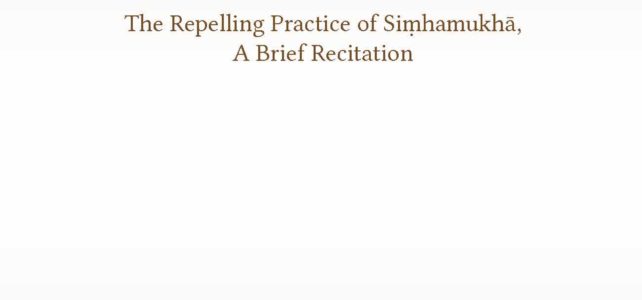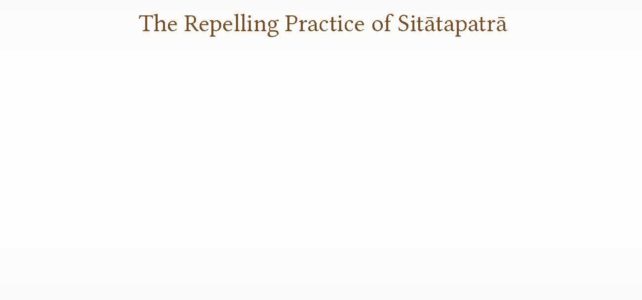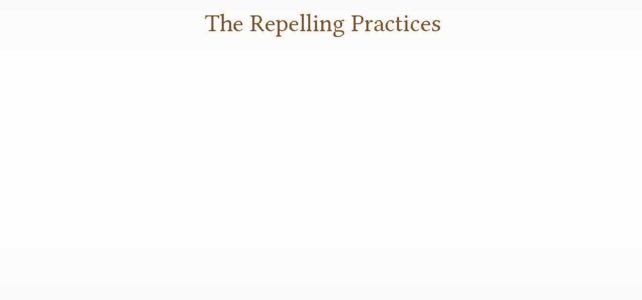སེང་གདོང་མའི་བཟློག་པ་བཞུགས་སོ།། The Repelling Practice of Siṃhamukhā, A Brief Recitation by Yeshe Nyima The daily ‘hand-clapping’ practice of Siṃhamukhā (the Lion-faced Dakini) assists practitioners to overcome and eliminate obstacles, hindrances, and dangers associated with various calamities, supernatural threats from humans and
The Repelling Practice of Siṃhamukhā, A Brief Recitation



